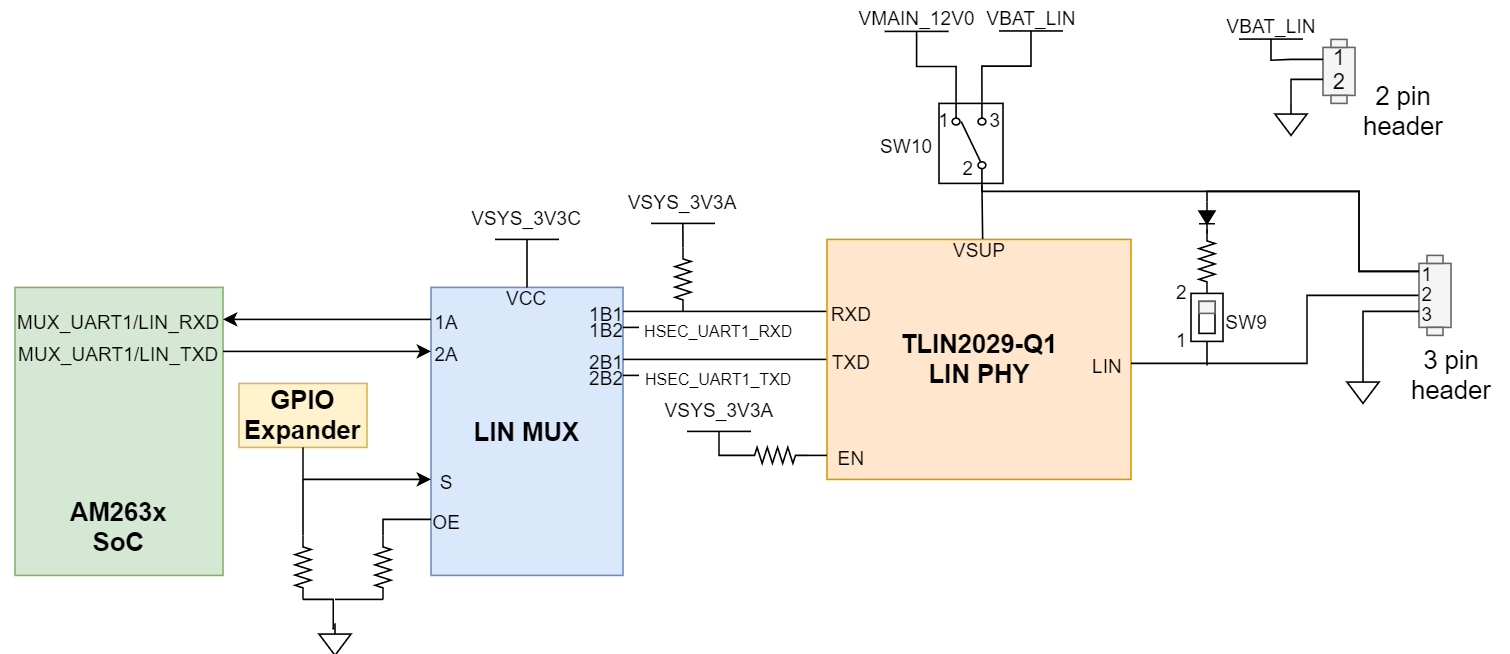SPRUJ93 august 2023
- 1
- Description
- Features
- 4
- 1Evaluation Module Overview
-
2Hardware
- 2.1 Functional Block Diagram
- 2.2 Component Identification
- 2.3 Power Requirements
- 2.4 Reset
- 2.5 Clock
- 2.6 Boot Mode Selection
- 2.7 JTAG Path Selection
- 2.8 Header Information
- 2.9 GPIO Mapping
- 2.10 Push Buttons
- 2.11 Test Points
- 2.12 Interfaces
- 2.13 HSEC Pinout and Pinmux Mapping
- 3Software
- 4Hardware Design Files
- 5Additional Information
- 6References
2.12.11 LIN
The AM263x Control Card supports Local Interconnect Network communication through the use of a LIN transceiver (TLIN2029-Q1) that outputs the LIN Bus to the second pin of a 3 pin header.
 Figure 2-33 LIN PHY
Figure 2-33 LIN PHYThe LIN transmit and receive signals are internally muxed on the AM263x with the UART1 transmit and receive signals. Because of the internal muxing, there is an external 1:2 mux (SN74CB3Q3257PWR) which has a select line that is driven by the GPIO Expander.
| Select Logic | Condition | Function |
|---|---|---|
| LOW | LIN Selected | A→B1 |
| HIGH | HSEC UART Selected | A→B2 |
The AM263x SoC does not have an integrated pull up for the LIN RX signal, therefore, an external pull up resistor is needed to the processor I/O supply voltage is required.
The AM263x Control Card includes a double pole single throw switch (SW10) to control the voltage supply for the LIN Transceiver.
| LIN Voltage Switch Position | Voltage Supply Selected |
|---|---|
| Pin 1-2 | VMAIN, 5 V supply output from either the USB-C connection or HSEC power connection. |
| Pin 2-3 | VBAT_LIN, external voltage supply from pin 1 of 2 pin header |
There is also a single pole throw switch (SW9) that drives the LIN Node application.
| LIN Node Application Switch Position | LIN Node Application |
|---|---|
| Pin 1 | Device node application |
| Pin 2 | Controller node application |
The Control Card pulls up the enable pin of the LIN transceiver for the transceiver to be in normal operational mode when the I/O Voltage supply is brought up.